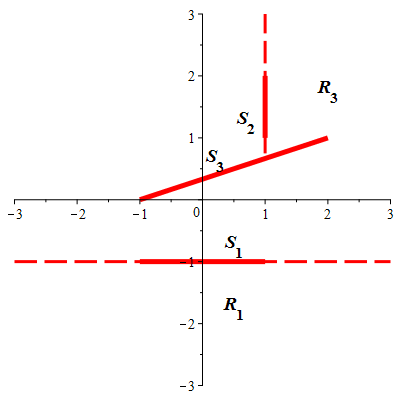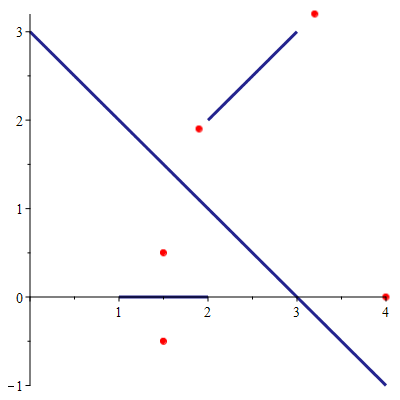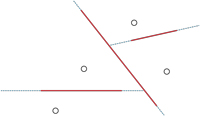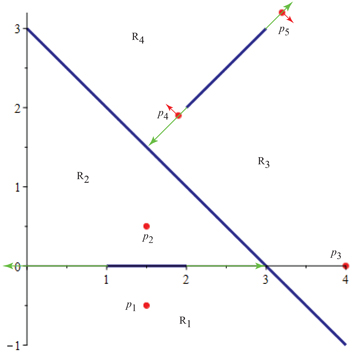Let $n\ge1$ be an integer number. Let $n$ nonoverlapping closed line segments and $n+2$ distinct points which do not belong to those line segments be given in the plane $\mathbb{R}^2$.
Can two points among the $n+2$ given points be chosen such that the ones see one another i.e. the closed line segment connecting these points does not intersect any of the given $n$ line segments? In the case $n=1$ the affirmative answer is simple. However, I don't know the answer even for $n=2$.
Addition. Here is a modification of Joseph picture which demonstrates the difficulties when realizing the idea by Per
If the points $A(\frac {38} {20},\frac {38} {20}) $ and $B(\frac {32} {10},\frac {32} {10} ) $ are assumed to belong to $\{(x,y):y \ge x,y\ge 3-x\} $, then the proof suggested by Per fails.
Addition 2.
I'd like to demonsrate another difficulty which appears in the Per's approach. Let us consider
three segments $S_1:=[(-1,-1),(1,-1)],\,S_2:=[(1,1),(1,2)],\,S_3:=[(-1,0),(2,1)]$. The points
are not of importance here. After the first step the plane is divided into two regions $R_1$ and $R_2$.

After the second step we obtain
the regions $R_1$ and $R_3$, where the latter is not convex.

It is unclear for me whether after the final step we obtain the convex regions only (the larger the value of $n$, the more complicated the situation). One more problem consists in the definitions of the borders of the regions. In order to apply the pigeonhole principle the regions considered with their borders must not intersect. My advice to Per is to read the book I. Lakatos. Proofs and Refutations. Cambridge: Cambridge University Press.(1976). https://books.google.com.ua/books/about/Proofs_and_Refutations.html?id=1n6SFdXCOBQC&redir_esc=y



